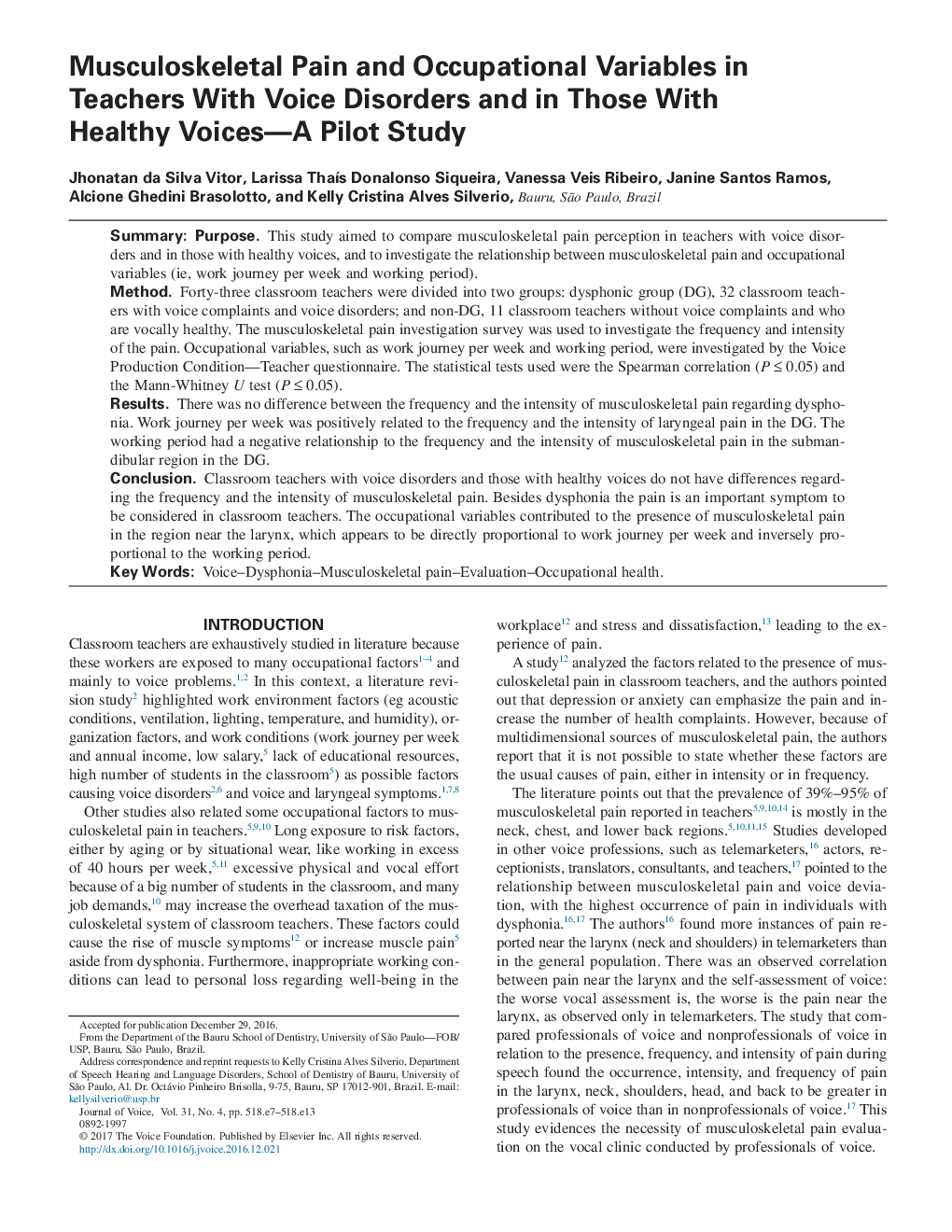| Article ID | Journal | Published Year | Pages | File Type |
|---|---|---|---|---|
| 5124218 | Journal of Voice | 2017 | 7 Pages |
SummaryPurposeThis study aimed to compare musculoskeletal pain perception in teachers with voice disorders and in those with healthy voices, and to investigate the relationship between musculoskeletal pain and occupational variables (ie, work journey per week and working period).MethodForty-three classroom teachers were divided into two groups: dysphonic group (DG), 32 classroom teachers with voice complaints and voice disorders; and non-DG, 11 classroom teachers without voice complaints and who are vocally healthy. The musculoskeletal pain investigation survey was used to investigate the frequency and intensity of the pain. Occupational variables, such as work journey per week and working period, were investigated by the Voice Production Condition-Teacher questionnaire. The statistical tests used were the Spearman correlation (Pââ¤â0.05) and the Mann-Whitney U test (Pââ¤â0.05).ResultsThere was no difference between the frequency and the intensity of musculoskeletal pain regarding dysphonia. Work journey per week was positively related to the frequency and the intensity of laryngeal pain in the DG. The working period had a negative relationship to the frequency and the intensity of musculoskeletal pain in the submandibular region in the DG.ConclusionClassroom teachers with voice disorders and those with healthy voices do not have differences regarding the frequency and the intensity of musculoskeletal pain. Besides dysphonia the pain is an important symptom to be considered in classroom teachers. The occupational variables contributed to the presence of musculoskeletal pain in the region near the larynx, which appears to be directly proportional to work journey per week and inversely proportional to the working period.
